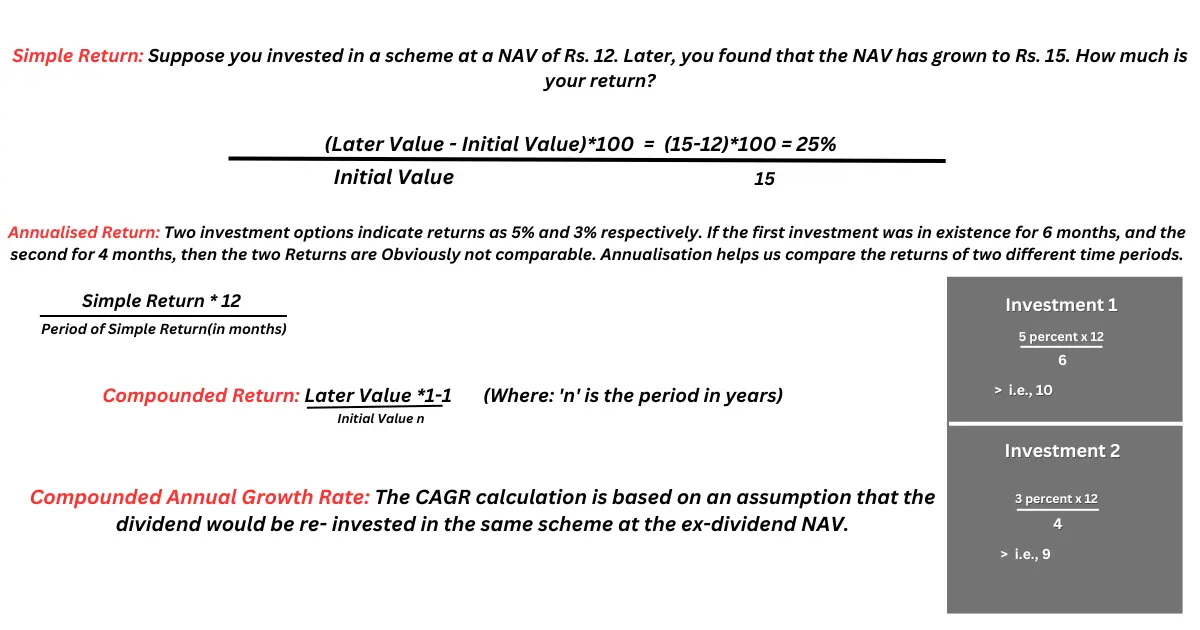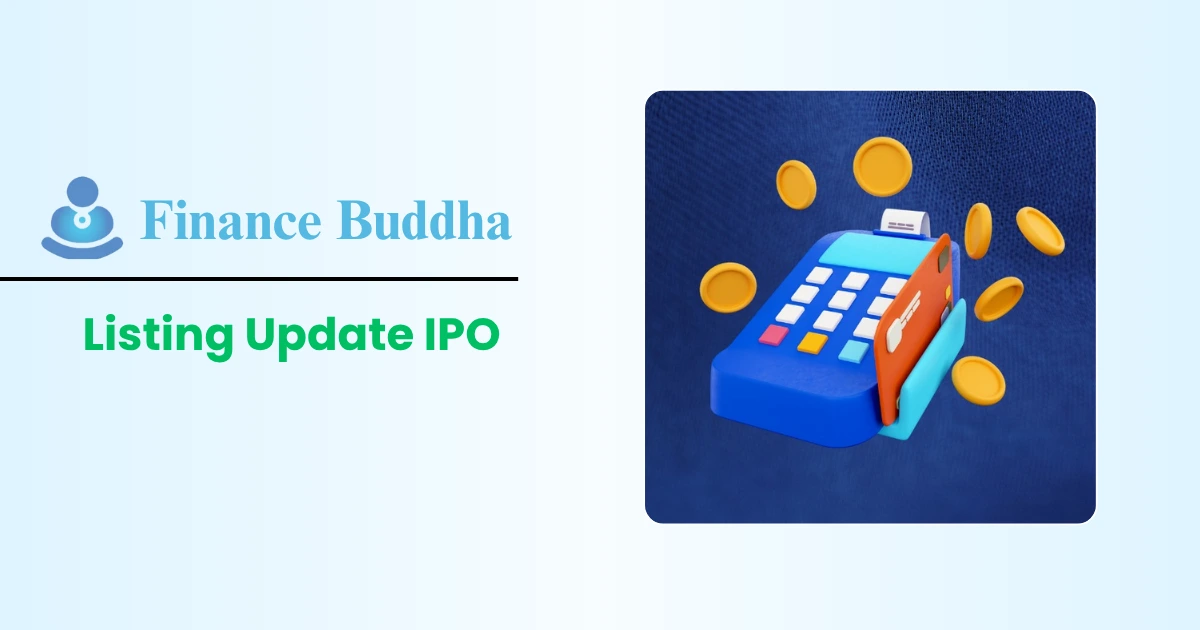CHAPTER 10 : RISK, RETURN AND PERFORMANCE OF FUNDS
GENERAL RISK FACTORS
These are risks that all mutual funds are exposed.
- Liquidity Risk
- Interest Rate Risk
- Re-investment Risk
- Political Risk
- Economic Risk
- Foreign Currency Risk
- Risks associated with transactions in Units through stock exchange (s).
SPECIFIC RISK FACTORS
1. Risk related to equity and equity related securities
2. Risk associated with Dividend
3. Risks associated with mid-cap and small-cap companies:
Large-Cap Stocks: 1st-100th company in terms of full market capitalization.
Mid-Cap Stocks: 101st -250th company in terms of full market capitalization.
Small-Cap Stocks: 251st company onwards in terms of full market capitalization.
In equity investments, there is a risk that such companies may not achieve their expected earnings results, or there could be an unexpected change in the market.
4. Risk associated with Derivatives: Derivatives are highly leveraged instruments. Even a small price movement in the underlying security could have an impact on their value and consequently, on the NAV of the Units of the Scheme.
5. Risk factors associated with repo transactions in Corporate Bonds: The Scheme may be exposed to counter party risk in case of repo lending transaction in the event of the counterparty failing to honour the repurchase agreement.
6. Risk Factors Associated with Investments in REITs and InvITs: RelTs and InvITs are exposed to price-risk, interest rate risk, credit risk, liquidity or marketability risk, reinvestment risk.
7. Risks related to debt funds :
- Reinvestment Risk: Interest rates prevailing on the coupon payment or maturity dates may differ from the original coupon of the bond.
- Rating Migration Risk: Fixed income securities are exposed to rating migration risk, which could impact the price on account of change in the credit rating.
- Credit Risk: Fixed income securities (debt and money market securities) are subject to the risk of an issuer’s inability to meet interest and principal payments on its debt obligations.
Risk Management Strategies
Managing Market Liquidity Risk: The liquidity risk is managed by creating a portfolio which has adequate access to liquidity.
Managing Credit Risk: Risk associated with fixed income securities is managed by making investments in securities issued by borrowers, which have a good
Managing Rating Migration Risk: The aim is to invest in high grade/quality securities.
Managing Term Structure of Interest Rates Risk: The Investment Manager actively manages the duration based on the ensuing market conditions.
Managing Risk associated with favourable taxation of equity-oriented Scheme: This risk is mitigated as there is a regular monitoring of equity exposure of each of the equity- oriented Scheme of the Fund.
Re-investment Risk: Prevalent for fixed income securities, but as the fixed income investments of the Scheme are generally short duration in nature, the impact can be expected to be small.
FACTORS AFFECTING PERFORMANCE OF EQUITY SCHEMES
Fundamental and Technical analysis
Earnings per Share (EPS): Net profit after tax + No. of equity shares outstanding. This indicates how much profit the company earned for each equity share that they own.
Price to Earnings Ratio (P/E Ratio): Market Price per share + Earnings Per Share (EPS). P/E ratio indicates how much investors in the share market are prepared to pay in relation to the company’s earnings.
Book Value per Share: Net Worth + No. of equity shares outstanding. This is an indicator of how much each share is worth, as per the company’s own books of accounts.
Price to Book Value: Market Price per share + Book Value per share. An indicator of how much the share market is prepared to pay for each share of the company, as compared to its book value.
Dividend Yield: Dividend per share Market price per share.
Portfolio building approach Top down and Bottom up.
In a top-down approach, the portfolio manager evaluates the impact of economic factors first and narrows down on the industries that are suitable for investment. Thereafter, the companies are analysed and the good stocks within the identified sectors are selected for investment.
A bottom-up approach analyses the company-specific factors first and then evaluates the industry factors and finally the macro-economic scenario and its impact on the companies that are being considered for investment. Stock selection is the key decision in this approach.
FACTORS AFFECTING PERFORMANCE OF DEBT SECURITIES
Investment in a debt security, entails a return in the form of interest (at a pre-specified frequency for a pre-specified period), and repayment of the invested amount at the end of the pre-specified period.
The pre-specified period is called tenor. At the end of the tenor, the securities are said to mature. The total return that an investor earns or is likely to earn on a debt secure said to its yield.
Securities issued by the Government are called Government Securities or G-Sec or Gilt. Since the government is unlikely to default on its obligations, Gilts are viewed as safe as there is no credit risk associated with them. The difference between the yield on Gilt and the yield on a non- Government Debt security is called its credit spread.
Interest Rates: Suppose Company X issued a debenture for a period of 5 years carrying a coupon rate of 9.5% p.a. The debenture carried a credit rating of AAA, which denotes highest safety.
Two years later, the debenture has residual maturity of 3 years, i.e., the debenture will mature after 3 years. At this stage, the interest rate for AAA rated debentures having 3-year maturity is 8.5% p.a. In such a case, the Company X debenture would fetch premium in the secondary market over its face value.
Credit Spreads Suppose an investor has invested in the debt security of a company. Subsequently, its credit rating improves. The market will now be prepared to accept a lower credit spread. Correspondingly, the value of the debt security will increase in the market.
MEASURES OF RISK
RISK IN FUND INVESTING WITH A FOCUS ON INVESTORS
| Type of Risk | Particular |
|---|---|
| Risks in Equity Funds | An investor would be exposed to the risk of price fluctuations in an equity fund. The risk is likely to go up when one moves from large-cap to mid-cap to small-cap schemes. |
| Risk in Debt Funds | Debt fund NAVs may fluctuate due to change in interest rates or due to credit migration. That means the debt fund portfolio may not be as stable as one expected. |
| Risk in Hybrid Funds | SEBI on Mutual fund scheme categorization defined the asset allocation between equity and debt in case of certain categories within the hybrid funds. The distributor must be careful in evaluating and selecting the schemes. |
| Risk in Gold Funds | gold does well when the other financial markets are in turmoil. When a country goes into war, and its currency weakens, gold funds generate excellent returns. |
| Risk in Realstate Funds | Transaction costs, in the form of stamp duty, registration fees, etc. and regulatory riik is high in real estate. The transparency level is low even among the real estate development and construction companies. |
Measures of Risks
1. Variance: Variance measures the fluctuation in periodic returns of a scheme, as compared to its own average return. This can be easily calculated in MS Excel: var (range of cells where the periodic returns are calculated)
2. Standard Deviation: Standard deviation is a measure of total risk in an investment. As a measure of risk, it is relevant for both debt and equity schemes.
A high standard deviation indicates greater volatility in the returns and greater risk. Comparing the standard deviation of a scheme with that of the benchmark and peer group funds gives the investor a perspective of the risk in the scheme
3. Beta: Beta is based on the Capital Asset Pricing Model (CAPM), which states that there are two kinds of risk in investing in equities systematic risk and non-systematic risk. Since non-systematic risk can be diversified away, investors need to be compensated only for systematic risk, according to CAPM. This systematic risk is measured by its Beta.
4. Modified Duration: Modified duration measures the sensitivity of value of a debt security to changes in interest rates. Higher the modified duration, higher is the interest sensitive risk in a debt portfolio.
5. Credit Rating: The credit rating profile indicates the credit or default risk in a scheme.
Certain Provisions with Respect to Credit Risk
GATING OR RESTRICTION ON REDEMPTION IN MUTUAL FUNDS
The circumstances calling for restriction on redemption should be such that illiquidity is caused in almost all securities affecting the market at large due to a systematic crises or event, rather than in any issuer specific securities.
When restriction on redemption is imposed, the following procedure shall be applied:
- No redemption requests up to Rs. 2 lakhs shall be subject to such restriction;
- When redemption requests are above Rs. 2 lakhs, AMCs shall redeem the first Rs. 2 lakhs without such restriction and remaining part, i.e., amounts over and above Rs. 2 lakhs shall be subject to the restriction.
The above information to investors shall be disclosed prominently and extensively in the scheme related documents regarding the possibility that their right to redeem may be restricted in such exceptional circumstances and the time limit for which it can be restricted.
CHAPTER 1: Investment Landscape
CHAPTER 2 : Concept And Role Of A Mutual Fund
Chapter 3: Legal Structure Of Mutual Funds In India
Chapter 4: Legal And Regulatory Framework
Chapter 5: Scheme Related Information
Chapter 6: Fund Distribution & Channel Management Practices
Chapter 7: Net Asset Value, Total Expense Ratio & Pricing Of Units
Chapter 10 : Risk, Return And Performance Of Funds

































4 thoughts on “Chapter 10 : Risk Return And Performance Of Funds”